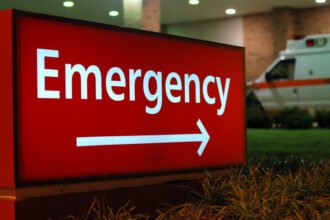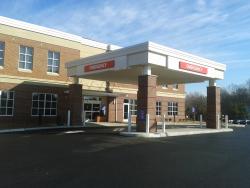The Great Recession has achieved what 20 years of policy machinations in Washington could not. For the second straight year, the world’s most expensive health-care system did not gobble up a greater share of the nation’s economy. In fact, health care grew at a slightly slower pace.
The Great Recession has achieved what 20 years of policy machinations in Washington could not. For the second straight year, the world’s most expensive health-care system did not gobble up a greater share of the nation’s economy. In fact, health care grew at a slightly slower pace.
Health spending rose just 3.9 percent to $2.59 trillion in 2010, only one-tenth of a percentage point faster than the previous year. That was slightly below the 4.2 percent nominal growth in gross domestic product (GDP), which means health care stayed at 17.9 of the total economy, no different than the prior year.
This represents the third straight year of markedly slower growth in health-care spending, compared to the prior decade. Health care was 13.8 percent of GDP in 2000 and 12.5 percent in 1990.
The lingering effects of the U.S. economic slowdown were largely responsible for a slower growth of health-care consumption, economists at the Centers for Medicare and Medicaid Services said. Cash-strapped consumers postponed elective surgeries, put off doctor visits and switched to generic drugs to hold down out-of-pocket costs, which grew just 1.8 percent in 2010.
The economic downturn “caused many people to lose employer-sponsored health insurance and people cut back on their use of care,” said Anne B. Martin, an economist at the Centers for Medicare and Medicaid Services.
That left government holding the bag in far more cases as seriously ill laid-off and vulnerable populations turned to the payer of last resort for coverage. Total spending by all levels of government on health care, including Medicare and Medicaid, which grew 5.0 percent and 7.2 percent in 2010, respectively, grew to 45 percent of all national health care expenditures, up from 41 percent in 2007, the year before the recession.
Government payments, from locally sponsored health-care clinics to the tax subsidy given to privately provided health insurance, now finance well over half of all health care spending. “The report highlights the dominant role of publicly provided and publicly influenced spending on health care,” said the Brookings Institution’s Henry Aaron, one of the nation’s leading health- care economists. “This is important, given the Supreme Court case coming up.”
Many state attorneys general and conservative groups have challenged the government’s right to require individuals to purchase insurance under the Patient and Protection and Affordable Care Act. The Obama administration and reform supporters say health insurance involves interstate commerce, which the government has both the right and an overwhelming interest in regulating. The case will be heard in April.
Still, the Obama administration can point to relatively tame growth in Medicare spending as vindication of its campaign to control costs in the program, which serves the nation’s nearly 50 million seniors and disabled citizens. Even before adjusting for the larger number of seniors in the program and the fact that seniors received a $250 rebate to help fill a gap in Medicare prescription drug coverage, Medicare spending grew slower than the GDP + 1 percent formula contained in the reform bill, which, when and if it goes into effect, would trigger automatic spending cut proposals from the Independent Payment Advisory Board.
Some analysts said the slowdown should continue, at least for a few more years. “Based on how research suggests the business cycle affects health care spending, it’s likely we’ll have a couple more years of slower growth,” said Paul Ginsburg, president of the Center for Studying Health System Change, a Washington-based health care think tank.
Of course, consumers opting out of immediate care for financial reasons may return to the health-care marketplace with a vengeance later on when an improving job market allows them to satisfy pent-up demand. But Ginsburg said that shouldn’t be a major concern, at least according to his group’s research.
The Center’s annual survey of 17,000 people conducted in 2010, the first post-recession year, showed that people claiming they had an unmet medical need fell to 6.5 percent from 7.8 percent in 2009, which marked the depths of the downturn for the job market. Those saying they had delayed care fell to 10.7 percent from 12.1 percent. Yet the pace of health-care growth both years was virtually indistinguishable. “It shows how much the issue of medical need is subjective,” Ginsburg said.
The slowdown was driven by three largest components of health-care spending: hospital visits, physician visits and drug spending. Hospital spending, which generates 31 percent of all health-care bills, grew just 4.9 percent, down from 6.4 percent in 2009. There was slower growth in the number of emergency room visits, outpatient visits and outpatient surgeries, and there was an absolute decline in hospital admissions.
Physician spending grew 2.5 percent, down from 3.3 percent in 2009. Stable prices amid falling use accounted for the decline, the CMS economists said. However, clinical services such as laboratory tests accounted for a larger share of the total as it has in most recent years. It rose to 19 percent of all physician payments in 2010 compared to 17 percent in 2005.
Drug spending also took a hit in 2010. The growing use of generic drugs, driven by a number of best-selling drugs losing their patent protection, as well as steeper Medicaid discounts negotiated by cash-strapped states, contributed to a growth rate that was a historic low, just 1.2 percent. However, Medicare’s privately run drug-insurance plans did not benefit from the trend, since that spending leaped 9.0 percent in 2010, and accounted for 23 percent of total spending on prescription drugs.
A few smaller sectors of the health-care economy did experience exponential growth. Profits and administration at health -insurance companies, which accounts for less than 6 percent of total health-care spending, surged 8.4 percent, more than twice growth in the overall economy. CMS analysts said higher premiums charged in 2010 generated much higher profits than anticipated because of falling benefit claims.
And public and non-profit research, funded largely by the National Institutes of Health, also leaped ahead – up 7.9 percent in 2010. But that was a one-time bump from the Obama’s administration stimulus act, which earmarked an additional $10 billion for NIH. That money will slow to a trickle and then disappear during the next few years.
The preceding appeared first at The Fiscal Times.









